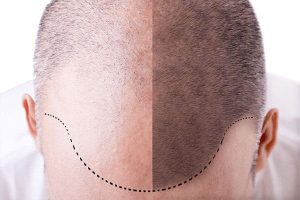The Ultimate Guide to Hair Transplant Recovery Process: What to Expect After Surgery
Undergoing a hair transplant is a significant step towards restoring your confidence and achieving a fuller head of hair. However, the journey doesn’t end once the surgery is complete — the hair transplant recovery process is just as crucial for ensuring optimal results. In this guide, we’ll walk you through what to expect after surgery and provide essential hair transplant aftercare tips.

Immediate Post-Operative Phase (Day 1-3)
The first few days after your hair transplant are critical for healing. Here’s what you can expect:
- Redness and Swelling: It’s normal to experience mild redness, swelling, and sensitivity in both the donor and recipient areas.
- Tiny Scabs: Small scabs will form around the newly transplanted grafts — avoid touching or picking them.
- Rest and Hydration: Ensure you rest, keep your head elevated, and drink plenty of water to reduce swelling.
Aftercare Tips:
- Avoid washing your hair during the first 48 hours.
- Sleep with your head elevated using extra pillows or a neck pillow.
- Refrain from touching or scratching the treated areas.
Early Recovery Phase (Day 4-14)
By day four, you’ll notice the swelling starts to subside, and the healing process accelerates:
- Washing Your Hair: Most clinics, including Hairneva, provide a special shampoo and instructions on how to gently cleanse your scalp without disturbing the grafts.
- Itching: It’s common to feel itchiness as the skin heals, but resist the urge to scratch.
- Scab Shedding: Around day 10, the scabs will naturally start to fall off — this is a positive sign of healing.
Aftercare Tips:
- Wash your hair as per your surgeon’s guidance using gentle, dabbing motions.
- Avoid hot showers, direct sunlight, and heavy exercise.
- Continue using any prescribed medications, such as antibiotics or anti-inflammatory drugs.
Mid-Recovery Phase (Week 2-8)
At this stage, you may notice what’s known as shock loss — where the transplanted hair falls out. Don’t panic — this is a completely normal part of the hair transplant recovery process.
- Hair Shedding: The transplanted follicles shed hair shafts to make way for new growth.
- Scalp Sensation: You might experience some numbness or tingling, which gradually fades.
- New Hair Growth: By the end of the second month, new hair may start sprouting, although it will be thin and soft initially.
Aftercare Tips:
- Stay patient and trust the process — shock loss is temporary.
- Protect your scalp from sun exposure by wearing a loose-fitting hat.
- Follow your clinic’s advice on when you can resume physical activities like swimming or gym workouts.
Long-Term Recovery Phase (Month 3-12)
This is where the magic happens — the newly transplanted hair starts growing thicker and stronger:
- Month 3-4: Early signs of new hair growth appear.
- Month 6: The hair becomes denser, and the texture improves.
- Month 12: Most patients see their final results — full, natural-looking hair growth.
Aftercare Tips:
- Continue using hair care products recommended by your clinic.
- Attend all scheduled follow-up appointments to monitor progress.
- Consider PRP (Platelet-Rich Plasma) therapy or exosome treatments to enhance hair growth.
Final Thoughts
The hair transplant recovery process requires time, patience, and proper hair transplant aftercare. By following your clinic’s guidelines and taking care of your scalp, you can maximize your results and enjoy a successful hair restoration journey.
At Hairneva, we provide personalized aftercare support to ensure your recovery is smooth and effective. If you have any questions about the recovery process, feel free to reach out to our expert team.


